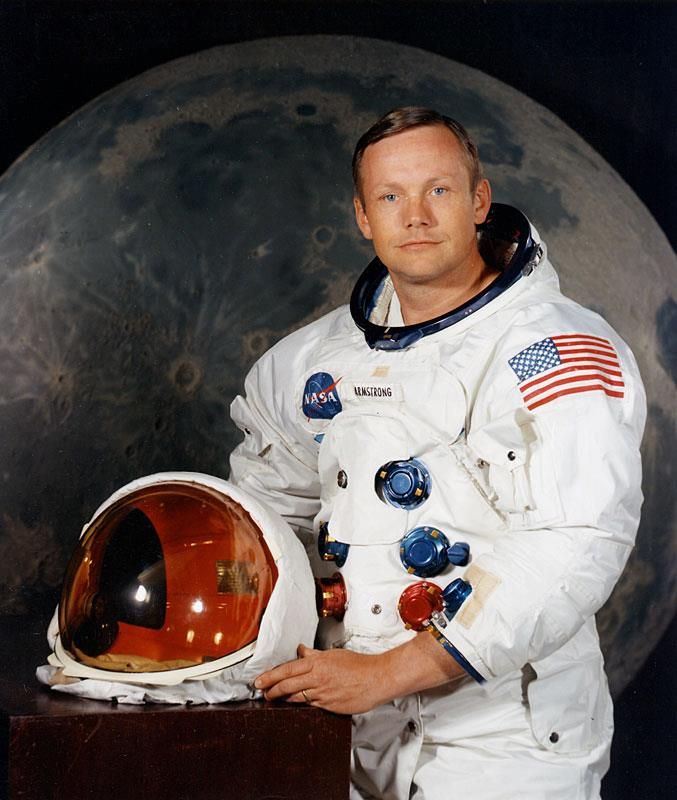Neil Armstrong: An Uncommon Man with a Commonly Deadly Disease

American icon Neil Armstrong, the first man to walk on the moon, died Saturday (Aug. 25) due to heart-surgery complications, officials said.
"Neil Armstrong was a hero not just of his time, but of all time," said President Barack Obama in a statement. "Thank you, Neil, for showing us the power of one small step."
Armstrong underwent surgery at the beginning of this month to bypass four blockages in his coronary arteries, according to news reports. During coronary bypass surgery, doctors take a section of a blood vessel in the arm, leg, or other body part, and use it to divert blood around blocked areas in an artery in order to restore blood flow to the heart muscle, according to the Mayo Clinic.
Though Armstrong was said to be "doing great" after his bypass, coronary bypass surgery doesn't cure the underlying heart problem that typically leads to the blockages in the first place — and that is coronary artery disease, the Mayo Clinic states. [10 Amazing Facts About the Heart]
Coronary artery disease is the number-one killer of men and women in the United States, according to the National Heart, Lung and Blood Institute.
Because bypass operations are a type of open-heart surgery they come with risks. According to the Mayo Clinic, the most common complications during or following coronary bypass surgery are bleeding and arrhythmias (heart rhythm irregularities). If a blood clot breaks loose soon after surgery, there is also a risk of a heart attack, though this complication is less common. Other less common risks include: kidney failure, infections of the surgery wound, temporary memory loss or muddled thinking, and stroke.
"In an otherwise acceptable health patient in this age range, I would expect a mortality rate of around 2 percent," said Dr. Jeffrey Everett, a cardiothoracic surgeon at The University of Tennessee Medical Center, referring to Armstrong and bypass surgery.
Sign up for the Live Science daily newsletter now
Get the world’s most fascinating discoveries delivered straight to your inbox.
The likelihood of complications increase with age. However, "'physiologic' age, meaning how well one's overall health is, [is] much more important than numeric age," Everett told LiveScience in an email. "Being male is not a higher risk, a woman of the same age would have a higher risk." And though bypass surgery has become very safe and beneficial for patients, there are always risks, Everett said. "[T]hey are never 0 percent. An unfortunate outcome in this case."
Coronary artery disease (also called coronary heart disease) can result from the build-up of plaque in the coronary arteries, which are the vessels that carry oxygen-rich blood to the heart, fueling the muscle's ability to pump. Risk of coronary artery disease increases with age.
Though he suffered from a common disease, Armstrong was far from a normal man, being the first to step onto the lunar surface on July 20, 1969 when he was commander of NASA's Apollo 11 mission. [Photos: Apollo 11 Moon Landing]
Armstrong's family reiterated his accomplishments, saying in a statement, "While we mourn the loss of a very good man, we also celebrate his remarkable life and hope that it serves as an example to young people around the world to work hard to make their dreams come true, to be willing to explore and push the limits, and to selflessly serve a cause greater than themselves."
The family statement went on, "For those who may ask what they can do to honor Neil, we have a simple request. Honor his example of service, accomplishment and modesty, and the next time you walk outside on a clear night and see the moon smiling down at you, think of Neil Armstrong and give him a wink."
Editor's Note: This article has been updated to reflect an error in the 10th paragraph, which was a dangling modifier, modifying Armstrong's name with the disease as a "common killer." We apologize for the glaring mistake.
Follow LiveScience on Twitter @livescience. We're also on Facebook & Google+.
Jeanna Bryner is managing editor of Scientific American. Previously she was editor in chief of Live Science and, prior to that, an editor at Scholastic's Science World magazine. Bryner has an English degree from Salisbury University, a master's degree in biogeochemistry and environmental sciences from the University of Maryland and a graduate science journalism degree from New York University. She has worked as a biologist in Florida, where she monitored wetlands and did field surveys for endangered species, including the gorgeous Florida Scrub Jay. She also received an ocean sciences journalism fellowship from the Woods Hole Oceanographic Institution. She is a firm believer that science is for everyone and that just about everything can be viewed through the lens of science.












